Indigenous Governance Database
consultation
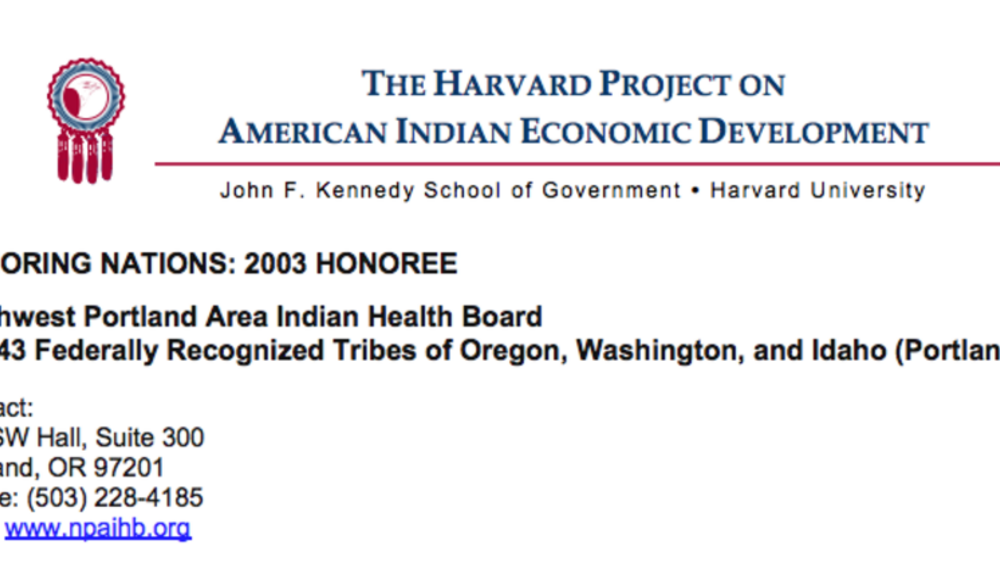
Northwest Portland Area Indian Health Board
Serving tribes in Oregon, Washington, and Idaho, the Northwest Portland Area Indian Health Board (NPAIHB) was created in 1972 to increase tribes’ ability to exercise control over the design and development of tribal health care delivery systems. Governed by tribal government delegates, NPAIHB…
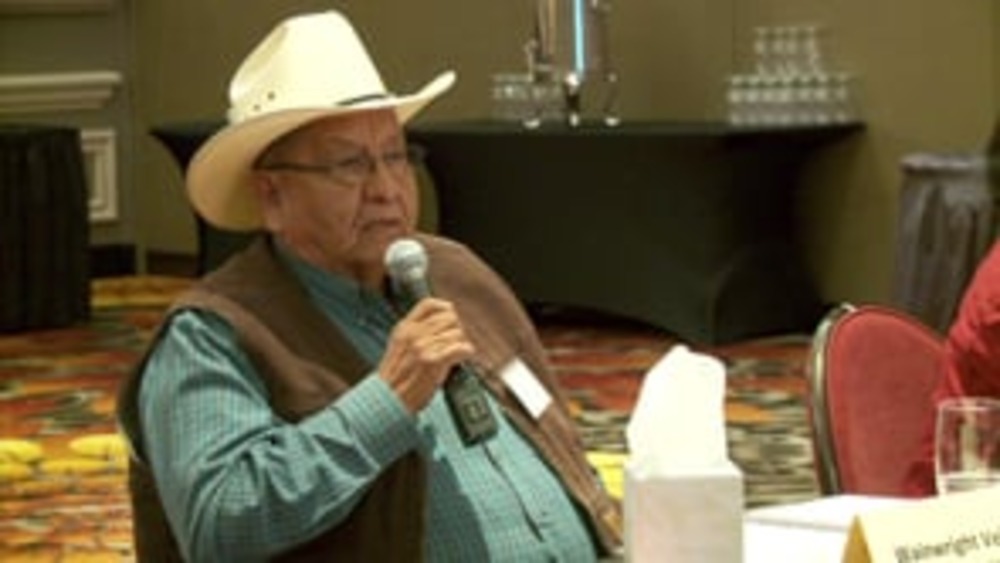
Robert Hershey and Andrew Martinez: The Legal Process of Constitutional Reform (Q&A)
Robert Hershey and Andrew Martinez engage participants in a lively discussion about the intricacies of secretarial elections and whether and how Native nations with Indian Reorganization Act constitutions should remove the Secretary of Interior approval clause from those governing documents.
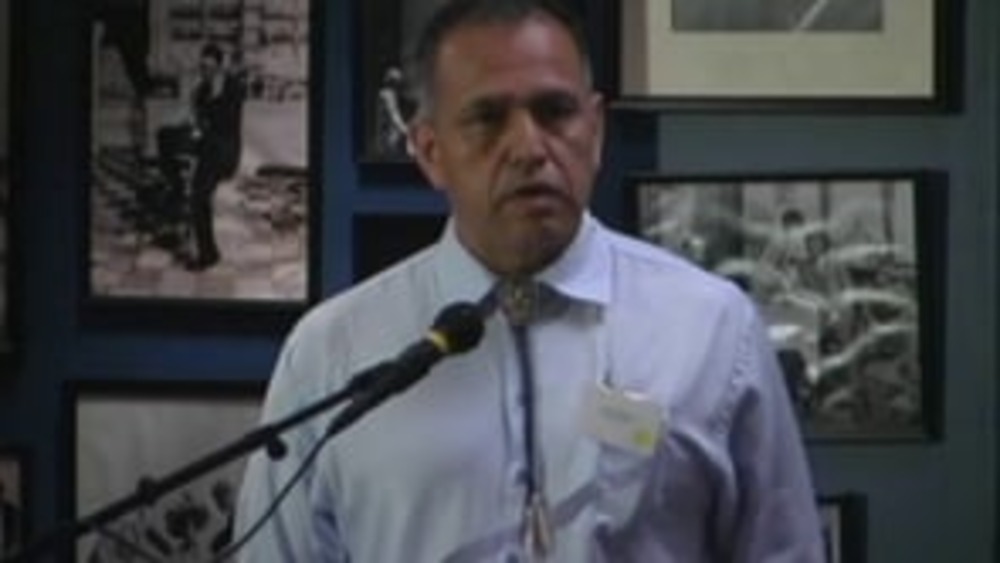
Honoring Nations: Darrell Hillaire and Sharon Kinley: Semiahmoo Project
Darrell Hillaire and Sharon Kinley from the Lummi Nation and its Semiahmoo Project discuss the unfortunate circumstances that prompted the creation of the project, and how the Lummi are using the project as an opportunity to re-engage their culture, elders, core values, and language.
Milton Bluehouse, Jr.: Introduction to Managing Environmental Conflict
U.S. Institute for Environmental Conflict Resolution Program Manager Milton Bluehouse, Jr. discusses the challenges to environmental conflict resolution specifically and dispute resolution generally, and offers some proven strategies for Native nations and other governments to overcome…
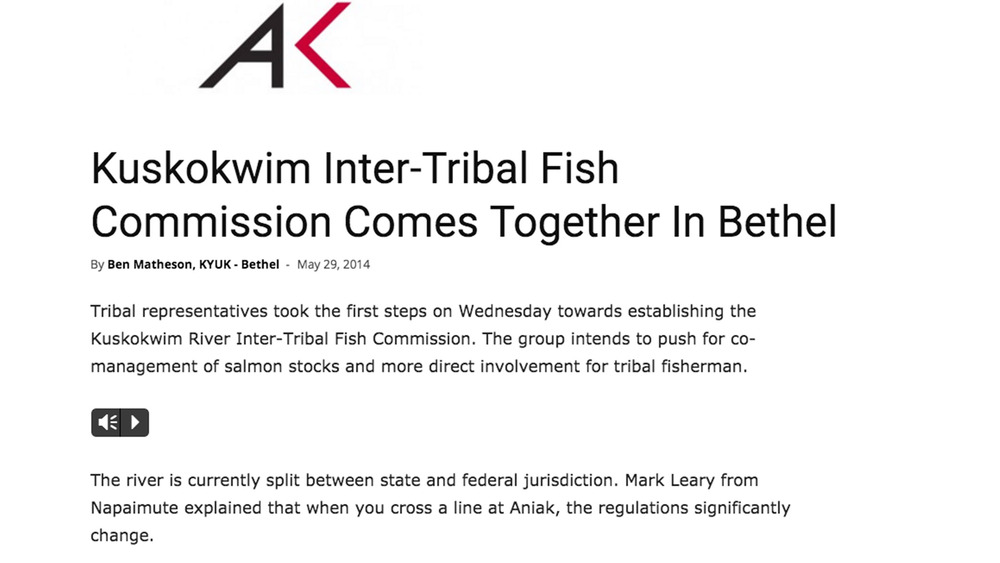
Kuskokwim Inter-Tribal Fish Commission Meets
Just a few weeks before the king salmon run begins in earnest, Kuskokwim tribal leaders came together in the first-ever meeting of Kuskokwim River Inter Tribal Fisheries Commission. The group is pushing to create a system in which tribes have a direct management role in the river’s salmon...

Indian Nations Are Still Fighting the U.S. Cavalry
Throughout the 19th Century the U.S. Cavalry perpetrated the genocide of Indian People. Today’s Cavalry–federal, state and local police–are no longer committed to extermination. But American cops’ flagrant disregard for tribal self-governance when carrying out law enforcement activities on Indian…

Advancing the State-Tribal Consultation Mandate
This summer, in the face of an impending private land sale of Pe’Sla, a Lakota/Dakota/Nakota Indian sacred site in the Black Hills, the United Nations Special Rapporteur on the Rights of Indigenous Peoples, S. James Anaya, directed that authorities in South Dakota “engage in a process of…
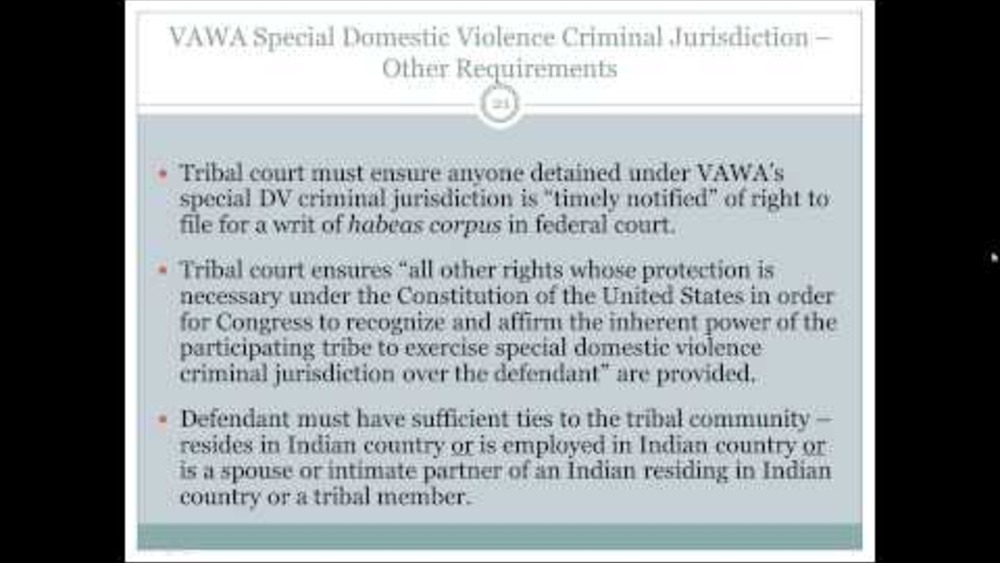
Implementing VAWA's Expanded Jurisdiction in Our Tribal Courts
In coordination with the Tribal Law and Policy Institute, NCAI hosting this webinar on April 5, 2013. In this webinar, panelists discussed the Violence Against Women Act (VAWA) provisions that expands tribal court jurisdiction over all persons for certain crimes committed on the reservation.
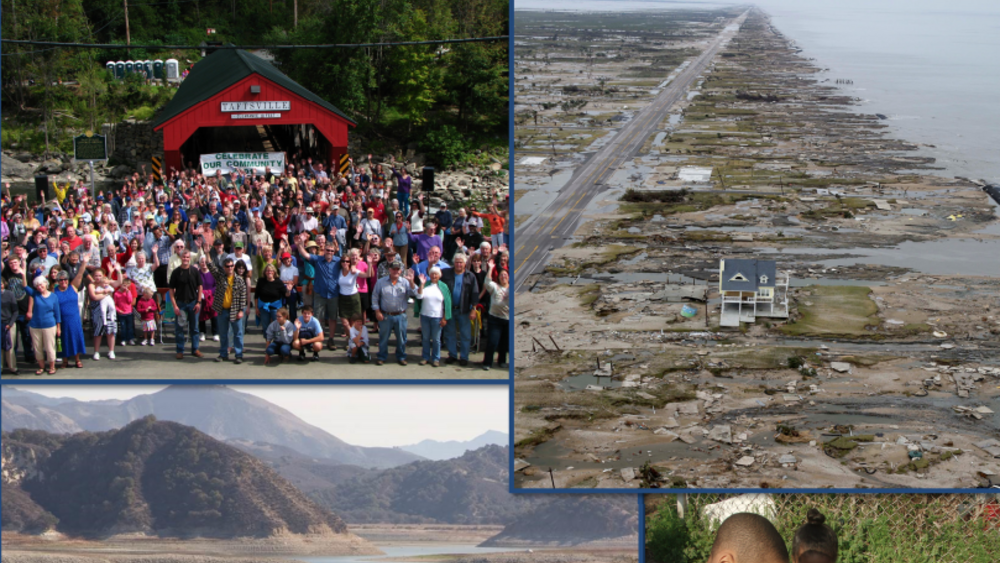
President's State, Local, and Tribal Leaders Task Force on Climate Preparedness and Resilience: Recommendations to the President
As the Third National Climate Assessment makes clear, climate change is already affecting communities in every region of the country as well as key sectors of the economy. Recent events like Hurricane Sandy in the Northeast, flooding throughout the Midwest, and severe drought in the West have…
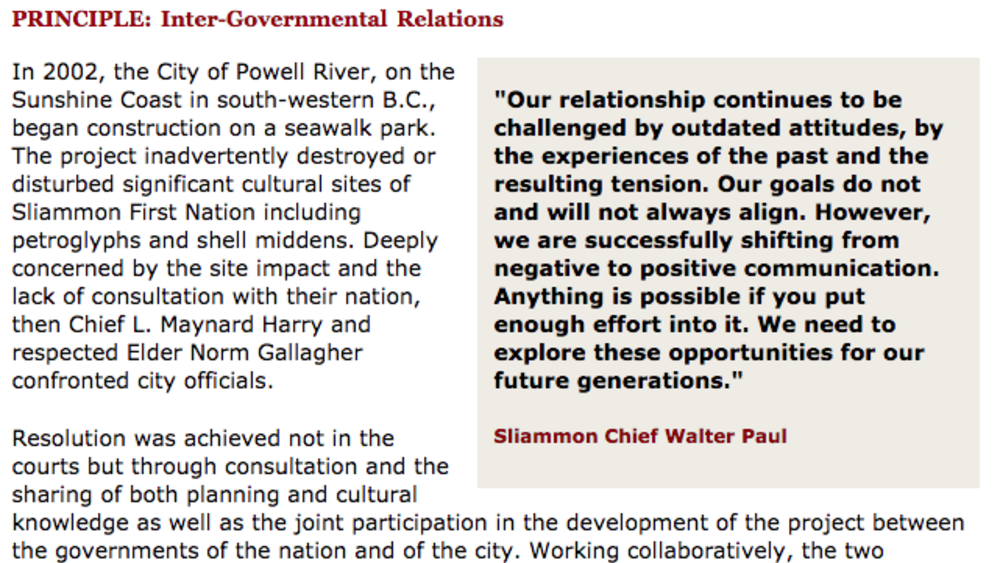
Best Practices Case Study (Inter-Governmental Relations): Sliammon First Nation
In 2002, the City of Powell River, on the Sunshine Coast in south-western B.C., began construction on a seawalk park. The project inadvertently destroyed or disturbed significant cultural sites of Sliammon First Nation including petroglyphs and shell middens. Deeply concerned by the site impact and…
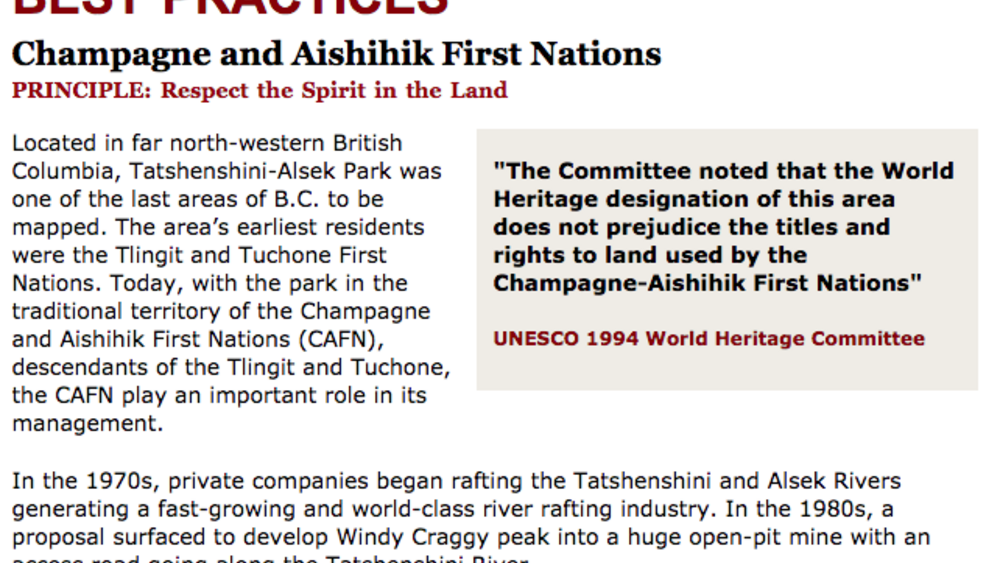
Best Practices Case Study (Respect the Spirit in the Land): Champagne and Aishihik First Nations
Located in far north-western British Columbia, Tatshenshini-Alsek Park was one of the last areas of B.C. to be mapped. The area's earliest residents were the Tlingit and Tuchone First Nations. Today, with the park in the traditional territory of the Champagne and Aishihik First Nations (CAFN),…
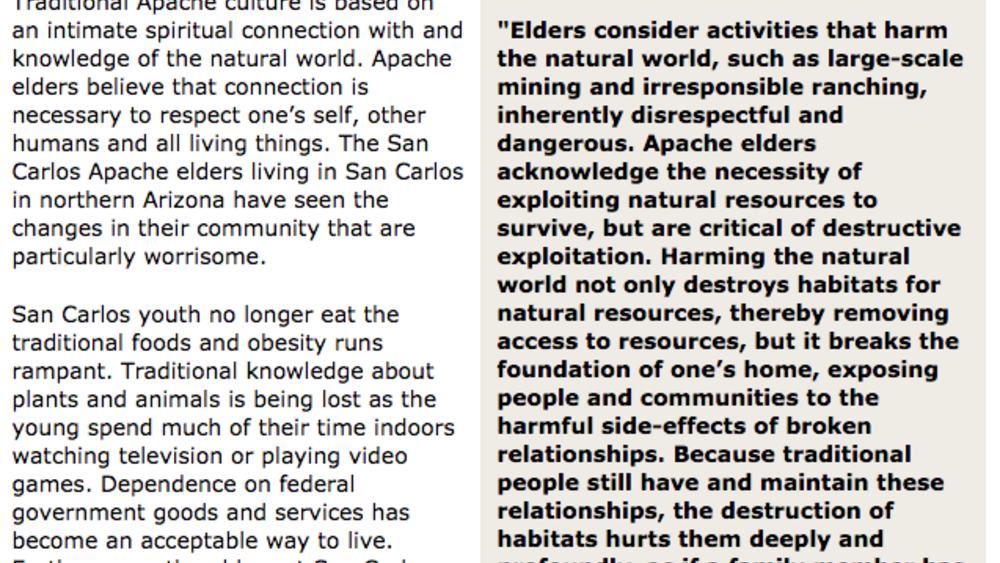
Best Practices Case Study (Cultural Alignment of Institutions): San Carlos Apache
Traditional Apache culture is based on an intimate spiritual connection with and knowledge of the natural world. Apache elders believe that connection is necessary to respect one’s self, other humans and all living things. The San Carlos Apache elders living in San Carlos in northern Arizona have…
